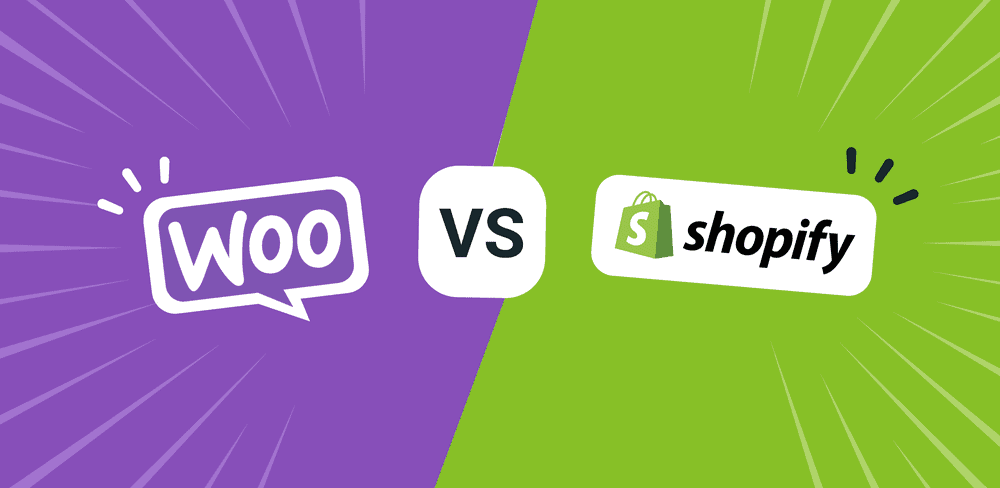When it comes to choosing the right platform for your online store, the need to Compare WooCommerce and Shopify often arises. Both options offer unique features and benefits tailored to different business needs, making it essential to understand their differences. WooCommerce, a WordPress plugin, provides extensive customization and flexibility, while Shopify, a hosted ecommerce platform, is known for its user-friendly interface and robust support. In this article, we will explore the strengths and weaknesses of WooCommerce and Shopify, helping you make an informed decision on which platform is best suited for your eCommerce venture.
Compare WooCommerce and Shopify Features
WordPress with WooCommerce is an open-source platform that allows you to create a fully customizable online store using WordPress as your content management system. WooCommerce is a plugin that adds ecommerce functionality to your WordPress site, including product listings, shopping cart, checkout, payment gateways, and more. With WooCommerce, you have full control over your store’s design, features, and data. You can also use thousands of free and paid plugins and themes to extend your store’s functionality and appearance.
Shopify, on the other hand, is a fully hosted platform that provides you with everything you need to start and run an online store, including website builder, hosting, security, payment processing, and more. Shopify is designed to be an all-in-one solution for ecommerce, and it offers a wide range of features, such as product listings, inventory management, order fulfillment, shipping, taxes, and more. Shopify also has its own app store, where you can find hundreds of apps and themes to enhance your store’s functionality and appearance.
Compare WooCommerce and Shopify Pricing
WordPress with WooCommerce is free to use, but you need to pay for web hosting, domain name, SSL certificate, and other third-party services. The cost of these services varies depending on your needs and provider. You also need to pay for premium plugins and themes if you want to add more advanced features and design to your store. The total cost of running a WooCommerce store can range from a few hundred dollars to thousands of dollars per year.
Shopify offers three pricing plans: Basic Shopify, Shopify, and Advanced Shopify. The Basic Shopify plan costs $29 per month and includes all the basic features you need to start an online store. The Shopify plan costs $79 per month and includes more advanced features, such as gift cards, professional reports, and abandoned cart recovery. The Advanced Shopify plan costs $299 per month and includes all the features of the previous plans, plus advanced shipping and reporting features. Shopify also charges transaction fees for each sale you make, unless you use Shopify Payments as your payment gateway.
Compare Ease of Use

WordPress with WooCommerce requires some technical knowledge and experience to set up and manage. You need to install WordPress, install WooCommerce, choose a theme, customize your store’s design and features, and manage your store’s data and security. While WordPress and WooCommerce are user-friendly, they can be overwhelming for beginners who are not familiar with web development and design.
Shopify, on the other hand, is designed to be easy to use and intuitive. You can set up your store in minutes using Shopify’s website builder, which allows you to choose a theme, customize your design, and add your products and pages. Shopify also provides you with a user-friendly dashboard, where you can manage your store’s settings, orders, customers, and more. Shopify’s support team is also available 24/7 to help you with any questions or issues you may have.
Differences in Customization
WordPress with WooCommerce is highly customizable, thanks to its open-source nature and vast community of developers and designers. You can customize your store’s design, features, and functionality using thousands of free and paid plugins and themes. You can also use your own code and scripts to create custom functionality and integrations.
Shopify is also customizable, but to a lesser extent than WordPress with WooCommerce. Shopify provides you with a wide range of themes and apps to choose from, but you have limited control over your store’s design and functionality. You can customize your store’s design using Shopify’s theme editor, but you need to have some coding knowledge to make more advanced changes. You can also use Shopify’s API to create custom integrations and functionality.
Compare Support
WordPress with WooCommerce has a large community of developers and designers who can help you with any questions or issues you may have. You can also find support through WordPress forums, documentation, and tutorials. However, since WordPress and WooCommerce are open-source platforms, you are responsible for your store’s security, backups, updates, and maintenance.
Shopify provides you with 24/7 support via phone, email, and live chat. Shopify’s support team can help you with any questions or issues you may have, including technical, design, and marketing. Shopify also provides you with automatic updates, backups, and security features, so you don’t have to worry about them.
Both WordPress with WooCommerce and Shopify are great platforms for building an ecommerce website. WordPress with WooCommerce is more customizable and flexible, but requires more technical knowledge and experience. Shopify is easier to use and provides you with more features and support, but is less customizable and more expensive. Ultimately, the choice between WordPress with WooCommerce and Shopify depends on your specific needs, goals. Contact Kascadian for assistance.






